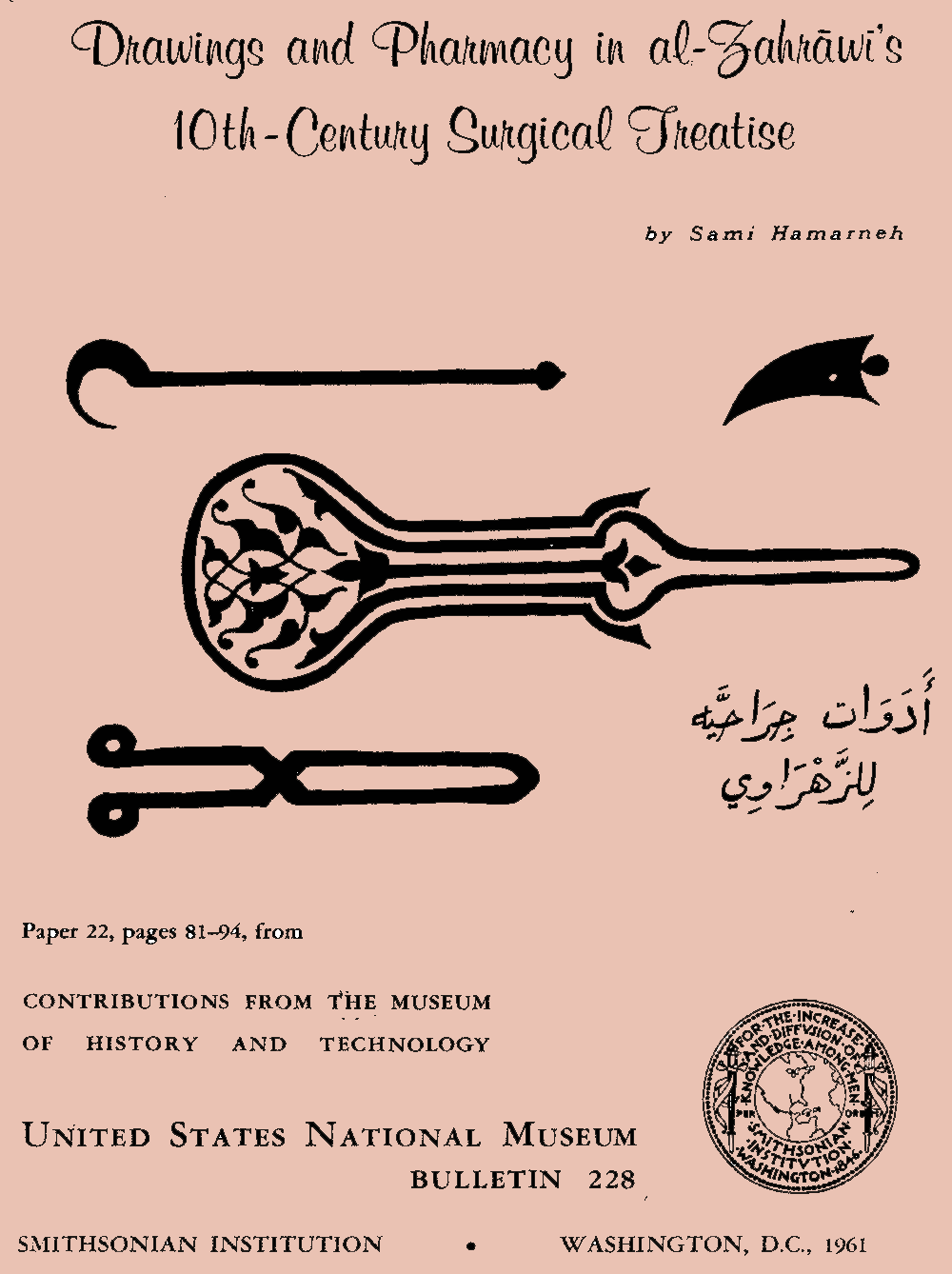
The Project Gutenberg EBook of Drawings and Pharmacy in Al-Zahrawi's 10th-Century Surgical Treatise, by Sami Hamarneh This eBook is for the use of anyone anywhere at no cost and with almost no restrictions whatsoever. You may copy it, give it away or re-use it under the terms of the Project Gutenberg License included with this eBook or online at www.gutenberg.org Title: Drawings and Pharmacy in Al-Zahrawi's 10th-Century Surgical Treatise Author: Sami Hamarneh Release Date: July 24, 2008 [EBook #26038] Language: English Character set encoding: UTF-8 *** START OF THIS PROJECT GUTENBERG EBOOK DRAWINGS AND PHARMACY *** Produced by Chris Curnow, Turgut Dincer, Joseph Cooper and the Online Distributed Proofreading Team at http://www.pgdp.net

Pg 81
Contributions From
The Museum of History and Technology
Paper 22
Drawings and Pharmacy in al-Zahrāwī’s
10th-Century Surgical Treatise
Sami Hamarneh
82
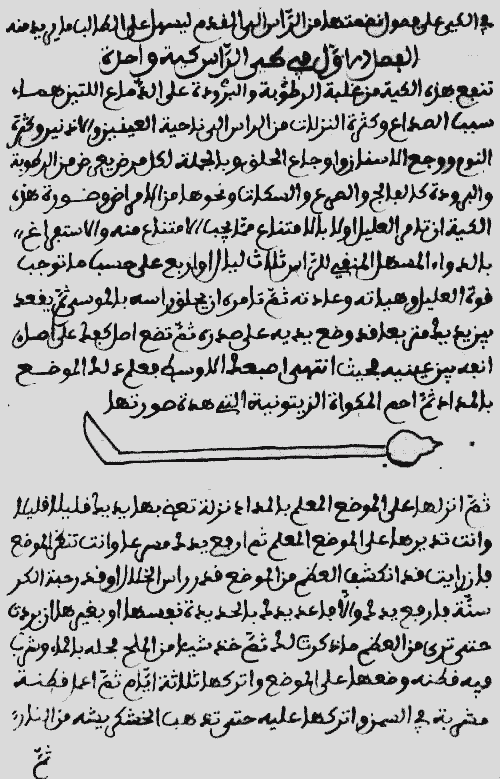
Figure 1.—Reproduction of a page from original Arabic manuscript indexed as "Cod. N.F. 476A" at Oesterreichische Nationalbibliothek in Vienna. Courtesy Oesterreichische Nationalbibliothek.
83
Probably the earliest independent work in Arabic Spain to embrace the whole of medical knowledge of the time is the encyclopedic al-Tasrīf, written in the late 10th century by Abū al-Qāsim al-Zahrāwī, also known as Abulcasis. Consisting of 30 treatises, it is the only known work of al-Zahrāwī and it brought him high prestige in the western world.
Here we are concerned only with his last treatise, on surgery. With its many drawings of surgical instruments, intended for the instruction of apprentices, its descriptions of formulas and medicinal preparations, and its lucid observations on surgical procedures, this treatise is perhaps the oldest of its kind.
Scholars today have available a translation of the text and reproductions of the drawings, but many of the latter are greatly modified from the originals.
This study reproduces examples of al-Zahrāwī’s original illustrations, compares some with early drawings based on them, and comments on passages in the treatise of interest to students of pharmacy and medical therapy.
The Author: Sami Hamarneh undertook this research into the history of medicine in connection with his duties as associate curator of medical sciences in the United States National Museum, Smithsonian Institution.
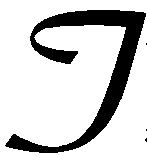 HE INTRODUCTION OF THE WRITINGS
of Abū al-Qāsim Khalaf ibn ʻAbbās
al-Zahrāwī—better known as Abulcasis (d.
ca. 1013)—to Western Europe was through the
Latin translation of his surgical treatise (maqālah)
by Gerard of Cremona (d. 1187).1 The response to
this treatise, thereafter, was much greater than the
attention paid to the surgery of any of the three
renowned physicians of the Eastern Caliphate: al-Rāzī
(Latin, Rhazes, d. ca. 925), the greatest clinician
in Arabic medicine; al-Majūsī (Haly Abbās, d. 994),
the author of the encyclopedic medical work, al-Malakī;2
84and Ibn Sīnā (Avicenna, 980-1037), the
author of the famous al-Qānūn fī al-Ṭibb, a codification
of the whole of medical knowledge. Because of the
widespread dissemination of this Latin version in
medieval Europe beginning with the latter part of
the 12th century, al-Zahrāwī attained more prestige
in the West than he did in Arabic Spain, his native
country, or in any other part of the Islamic world.3
HE INTRODUCTION OF THE WRITINGS
of Abū al-Qāsim Khalaf ibn ʻAbbās
al-Zahrāwī—better known as Abulcasis (d.
ca. 1013)—to Western Europe was through the
Latin translation of his surgical treatise (maqālah)
by Gerard of Cremona (d. 1187).1 The response to
this treatise, thereafter, was much greater than the
attention paid to the surgery of any of the three
renowned physicians of the Eastern Caliphate: al-Rāzī
(Latin, Rhazes, d. ca. 925), the greatest clinician
in Arabic medicine; al-Majūsī (Haly Abbās, d. 994),
the author of the encyclopedic medical work, al-Malakī;2
84and Ibn Sīnā (Avicenna, 980-1037), the
author of the famous al-Qānūn fī al-Ṭibb, a codification
of the whole of medical knowledge. Because of the
widespread dissemination of this Latin version in
medieval Europe beginning with the latter part of
the 12th century, al-Zahrāwī attained more prestige
in the West than he did in Arabic Spain, his native
country, or in any other part of the Islamic world.3
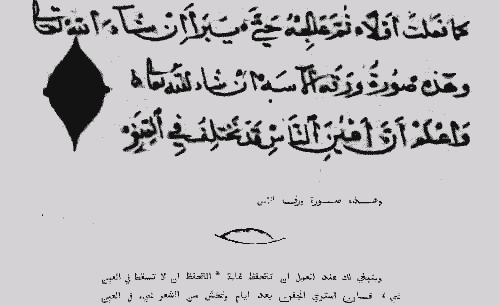
Figure 2.—The myrtle-leaf shape recommended for paper on which medicine is to be placed for cauterizing eyelid. Top, from original Arabic manuscript (Tüb. MS. 91), courtesy Universitätsbibliothek Tübingen. Bottom, from Channing, Albucasis
The fame attached to this surgical treatise, the 30th and last in al-Zahrāwī’s encyclopedic work al-Taṣrīf Liman ʻAjiza ʻan al-Taʼ līf, is founded on certain merits. The text is characterized by lucidity, careful description, and a touch of original observation of the surgical operations to which the treatise as a whole is devoted.4 Al-Zahrāwī furnishes his own drawings of the surgical and dental instruments he used, devised, or recommended for a more efficient performance. The illustrations were intended to provide instructional material for apprentices—whom al-Zahrāwī calls his children—as well as for the benefit of those who would read the work later on.5 The treatise is 85probably the oldest one known today that contains such instructive surgical illustrations and text.6
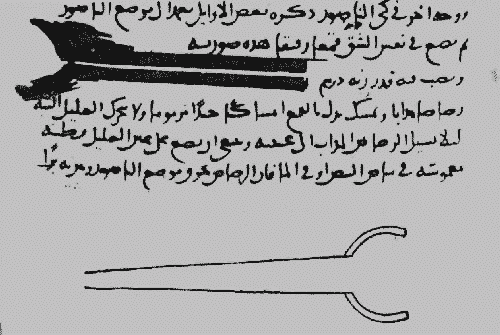
Figure 3.—Small funnel for pouring heated
lead into fistula of the eye for cauterization.
Top, from original Arabic manuscript (Vel.
2491), courtesy Süleymaniye Umumi Kütüphanesi
Müdürlüğü. Bottom, from Sudhoff,
Chirurgie, courtesy National Library of
Medicine.
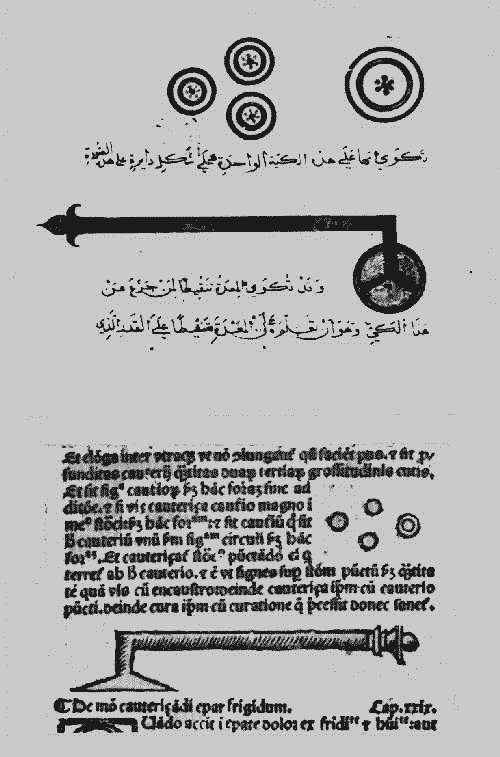
Figure 4.--Circular cauterization in stomach ailments. Top, from original Arabic manuscript (Tüb. MS. 91), courtesy Universitätsbibliothek Tübingen. Bottom, from the 1531 Latin edition of Pietro d’Argellata, Chirurgia Argellata cum Albucasis, hereinafter cited as Argellata 1531, courtesy National Library of Medicine.
This surgical treatise has been investigated, translated, and commented upon by eminent historians of medicine and surgery to whose works I shall refer in this article. However, the pharmaceutic and therapeutic details of the treatise have been somewhat overlooked.
As to the various illustrations of the surgical instruments (over 200 figures in all), an almost complete representation of samples has been introduced by Channing,7 Leclerc,8 Gurlt,9 Sudhoff,10 and others. Nevertheless, a good number of the reproduced drawings are greatly modified, most likely having been influenced by earlier illustrations in several Latin and vernacular versions of the treatise.11 This becomes clearer on comparison with seven Arabic manuscripts that have not been fully examined by Western scholars before and that—in several instances—show more authentic drawings of al-Zahrāwī’s surgical instruments than any heretofore published.12
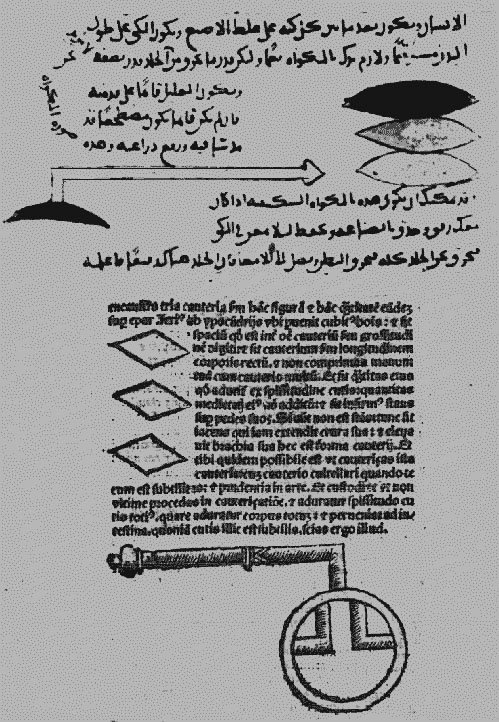
Figure 5.--Ink markings for identifying place
of cauterization. Top, from original Arabic
manuscript (Vel. 2491), courtesy Süleymaniye Umumi Kütüphanesi.
Bottom, from Argellata 1531, courtesy National
Library of Medicine.
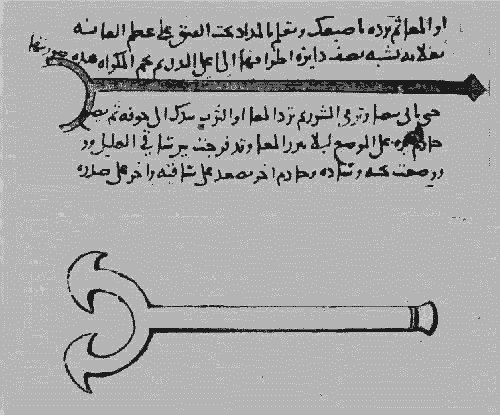
Figure 6.—Cautery in hernia. Top, from original Arabic manuscript (Vel. 2491), courtesy Süleymaniye Umumi Kütüphanesi Müdürlüğü. Bottom, from Leclerc, Albulcasis.
86This article therefore, is an attempt to present a sample of these illustrations with brief comments regarding certain figures and passages of interest to pharmacy and medical therapy.
With much gratitude I express my indebtedness to Prof. G. Folch Jou of Madrid, to Dr. A. Süheyl Ünver and Mr. H. Dener of Istanbul, and to the librarians of the depository institutions for their cooperation in the reproduction of the manuscripts on microfilm.
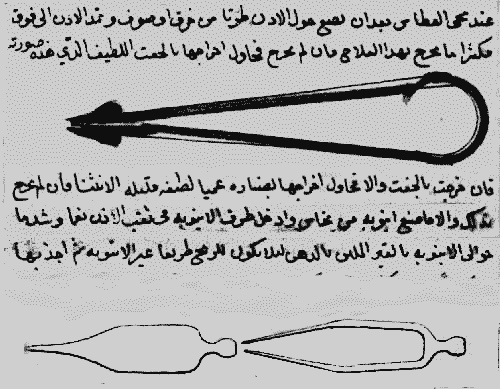
Figure 7.—Fine tweezer for removing foreign
bodies from the ear. Top, from original
Arabic manuscript (Ali 2854), courtesy
Süleymaniye Umumi Kütüphanesi Müdürlüğü.
Bottom, from Leclerc, Abulcasis.
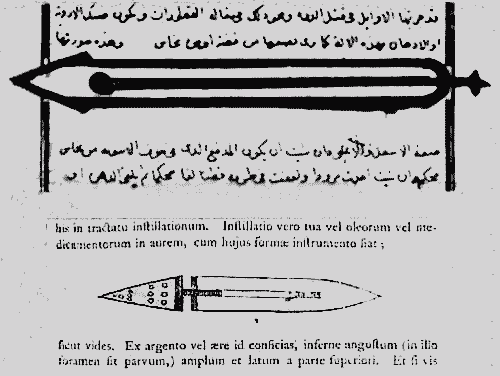
Figure 8.--Syringe with metal plunger-pump. Top, from original Arabic manuscript (Ali 2854), courtesy Süleymaniye Umumi Kütüphanesi Müdürlüğü. Bottom, from Channing, Albucasis.
87Al-Zahrāwī frequently introduces his treatises with brief instructive and sometimes informative preludes. However, in launching the last treatise of al-Taṣrīf he expounded in a most interesting and illuminating manner the status of surgery during his time. He also explains the reasons that forced him to write on this topic and why he wished to include, as he did, precautions, advice, instructional notes, and beautifully illustrated surgical drawings. For example, the prelude to the treatise mentions four incidents that he witnessed, all ending with tragic results because of the ignorance of physicians who attempted to operate on patients without the proper training in anatomy and surgical manipulation. "For if one does not have the knowledge of anatomy," al-Zahrāwī protests, then " ... he is apt to fall in errors that lead to death as I have seen it happen to many."13
Al-Zahrāwī divides his surgical treatise into three sections (abwāb). In the first section (56 chapters)14 he elaborates upon the uses and disadvantages of cautery in general. And on the ground that "fire touches only the ailing part ... without causing much damage to surrounding area," as caustic medicine does, he prefers cautery by fire (al-kay bi al-nār) to cautery by medicine (bi al-dawā).15 This, he adds, "became clear to us through lifelong experience, diligent practice, and thorough investigations of facts."16
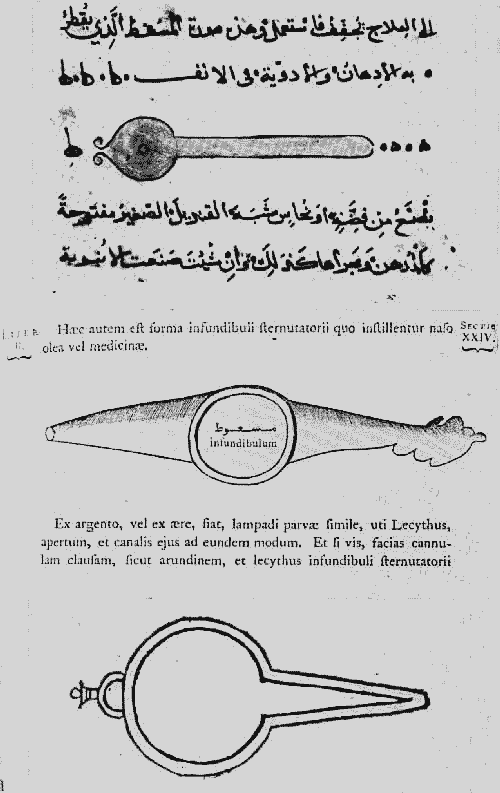
Figure 9.—Metal nose dropper. Top, from original Arabic manuscript (Tüb. MS. 91), courtesy Universitätsbibliothek Tübingen. Middle, from Channing, Albucasis (Smithsonian photo 46891-C). Bottom, from Sudhoff, Chirurgie, courtesy National Library of Medicine.
88He also proposes that instruments made of iron are more practical in many ways than those made of gold, because often, when gold instruments are put in fire, they either are not heated enough or are overheated, causing the gold to melt.
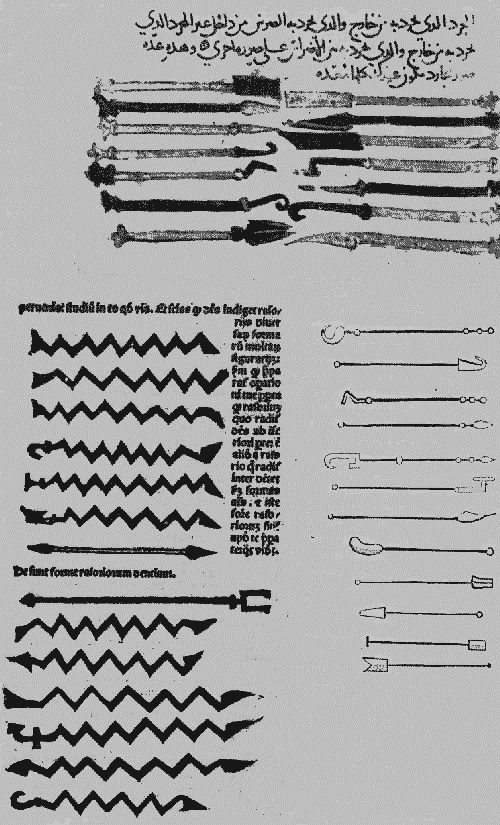
Figure 10.—Dental scrapers. Top, from original Arabic manuscript (Vel. 2491), courtesy Süleymaniye Umumi Kütüphanesi Müdürlüğü. Left, from Argellata 1531, courtesy National Library of Medicine. Right, from Channing, Albucasis.
Al-Zahrāwī gently refutes the superstition that cautery is "good only in springtime," and states that under the right conditions of the body’s humors it could be used in all seasons."17 Although he recommends cautery rather highly, he never minimizes the importance of treatment by drugs. Actually, he encourages the use of drugs, before, with, and after cauterization.18 For example, in chapter 16 on "the cauterization of eyelid when its hair grows reversedly into the eye," he recommends treatment by cautery and by medicine. In cautery, the area where fire is to be placed is marked with ink in the shape of a myrtle leaf. In drug treatment, the caustic medicine is applied to the eyelid over a paper in the shape of a myrtle leaf (fig. 2).
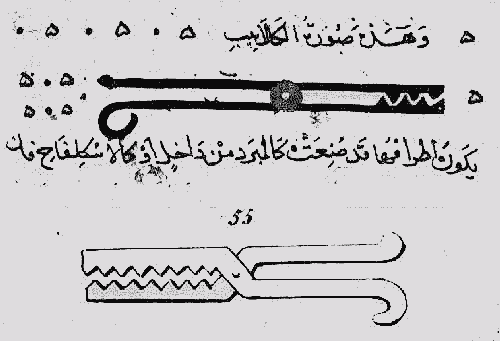
Figure 11.—Dental forceps. Top, from original Arabic manuscript (Tüb. MS. 91), courtesy Universitätsbibliothek Tübingen. Bottom, from Leclerc, Abulcasis.
In chapter 17 the author refers to an ancient method regarding cautery of the fistula in the inner corner of the eye. After incising the fistula, one "dirham" (derived from the Greek "drachma," which is equal to about 2.97 grams)19 of melted lead is poured into it through a fine funnel used for cauterization (fig. 3).
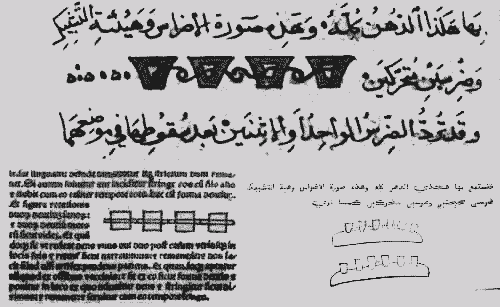
Figure 12.—Golden bridge to stabilize shaky teeth. Top, from original Arabic manuscript (Tüb. MS. 91), courtesy Universitätsbibliothek Tübingen. Left, from Argellata 1531, courtesy National Library of Medicine. Right, from Channing, Albucasis.
89In like manner, al-Zahrāwī discusses cautery of the stomach and the "cold liver" in chapters 26 and 27, respectively. The drawings therein represent shapes of the burns on the skin (fig. 4) and marks of ink to be drawn beneath the cartilage of the ribs (fig. 5) for the purpose of spotting the area of operation. Here also he describes carefully and clearly the methods of applying cautery and the types, position, and number of tools employed in each case. He likewise depicts (in chapter 45) instruments used in the treatment of hernia (fig. 6).
The second section (bāb), with about 99 chapters,20 deals with incision, puncturing, venesection, cupping, surgery on abscesses, and the withdrawal of arrows from the body. Al-Zahrāwī warns that ignorance in such operations may lead to damage of an artery or vein, causing loss of blood "by which life is sustained."21 Moreover, needle and thread (more than one kind is mentioned) for the stitching of wounds are repeatedly recommended.
According to al-Zahrāwī, foreign bodies that lodge in the ear (chapter 6) are of four origins: (1) "mineral stones" or substances resembling mineral stones such as iron and glass; (2) plant seeds (chick-peas and beans); (3) liquids, such as water and vinegar; and (4) animals, such as fleas. Several instruments are recommended for the removal of such foreign bodies—fine tweezers shaped like a dropper (fig. 7), a syringe with plunger-pump, and a tube made of silver or copper (fig. 8). Also of interest to pharmacy and therapy is the advice in regard to the use of lubricants to be applied before administering these fine instruments into the body’s cavities.
Chapter 24 is concerned with the treatment of the polypus that grows in the nose. The various kinds (including cancer growth), shapes, and colors of this type tumor and its treatment by surgery or medicine are described. A hollowed nose-dropper made of metal in the shape of a small kerosene lamp22 is suggested (fig. 9). The dropper is held by its handle while its contents are heated before use. Applying heat to nose drops was probably proposed because it serves two purposes: it allows easier flow of the "duhn," or the fatty substance used, and it raises the temperature of the drops to that of the body.
In his discussion on dental hygiene,23 al-Zahrāwī 90describes scrapers and dental forceps for teeth cleaning and extraction (figs. 10, 11) and brings in a few points of historical interest.24 He warns of the common error of extracting the adjacent healthy tooth instead of the ailing one due to the patient’s sense deception. For a gargle he prescribes salt water, vinegar, and wine (sharāb). To stop hemorrhage he used blue vitriol (al-zāj)—copper sulfate in our modern terminology.
In chapter 33 al-Zahrāwī discusses bridge-making for the consolidation of shaky teeth (fig. 12). He prefers the use of stable gold over silver which, he says, putrifies and rots in a short time. In a rational approach, he also suggests that the fallen tooth itself, or a similar one shaped out of a cow’s bone, be installed and connected with adjacent, stable teeth by a bridge.
Now, turning to chapter 36, we find al-Zahrāwī describing a knife-thin tongue depressor (fig. 13) that he used to facilitate the examination of inflamed tonsils and other swellings of the throat; it was made of silver or copper. And in chapter 37 (chapter 34 in Bes. 503), he describes the excision of an inflamed uvula by surgery. In the same chapter, he also mentions the use of instruments made of steel. Of pharmaceutical interest is the following free translation of the formula he prescribes "as a milder treatment by fumigation ... to be resorted to only when the swelling is subsiding":25
Take pennyroyal [Mentha pulegium Linn.], absinthe [Artemisia maritima Linn.], thyme, rue, hyssop, camomile, abrotanum [Artemisia abrotanum Linn.], and other similar herbs. Put all in a casserole and cover them with vinegar. Then close tightly with clay [lutum-sapientiae]—except for a small hole in the middle of the cover—and boil. Connect one end of a hollowed instrument, a crude form of an inhaler [fig. 14], with the hole in the cover and insert the other end, which contains the nozzle, into the patient’s mouth, allowing the vapor to rise up to the uvula. And if you are not able to secure this instrument, take a straw and attach its end to an egg-shell. The egg-shell will prevent burns in the patient’s mouth that might be caused by the heated vapor.
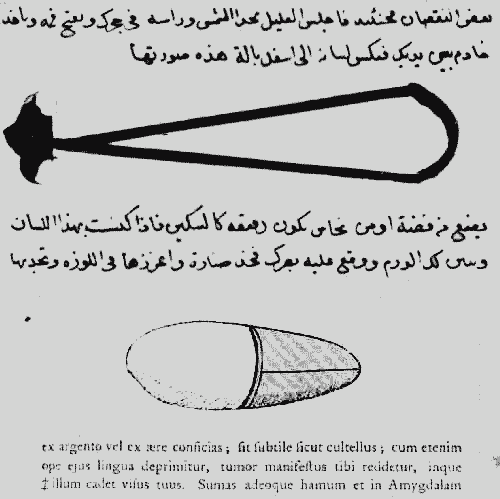
Figure 13.—Metal tongue depressor. Top,
from original Arabic manuscript (Ali 2854),
courtesy Süleymaniye Umumi Kütüphanesi
Müdürlüğü. Bottom, from Channing, Albucasis.
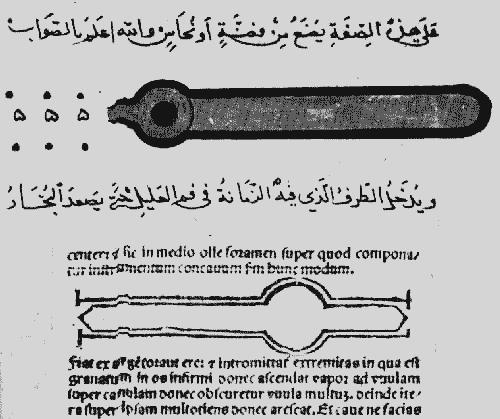
Figure 14.—Crude form of an inhaler. Top, from original Arabic manuscript (Tüb. MS. 91), courtesy Universitätsbibliothek Tübingen. Bottom, from Argellata 1531, courtesy National Library of Medicine.
Al-Zahrāwī repeats in chapter 53, on cancer, what Greek physicians had said earlier, that cancer could be removed by surgery only at its first stage and when found in a removable part of the body, such as the 91breast. Therefore, he confesses that neither he nor any one else he knew of ever applied surgery with success on advanced cancer.26
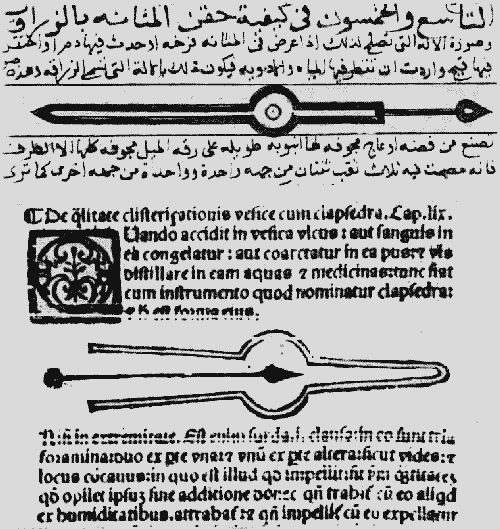
Figure 15.--Metallic syringe for injecting solutions
into the bladder. Top, from original
Arabic manuscript (Bes. 503), courtesy
Süleymaniye Umumi Kütüphanesi Müdürlüğü.
Bottom, from Argellata 1531, courtesy
National Library of Medicine.
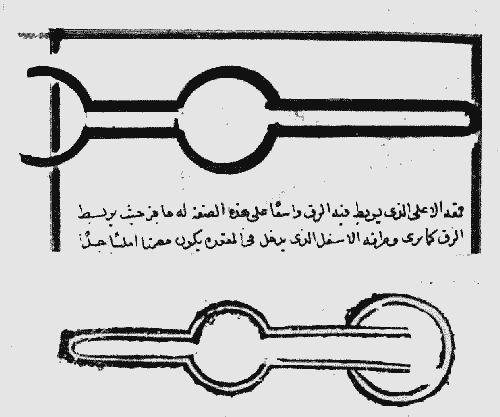
Figure 16.—Metallic or porcelain syringes for injection of enemas. Top, from original Arabic manuscript (Ali 2854), courtesy Süleymaniye Umumi Kütüphanesi Müdürlüğü. Bottom, from Argellata 1531, courtesy National Library of Medicine.
Of special interest in chapter 59 is the metallic "syringe" (fig. 15) used to inject medicinal solutions into the bladder: "The hollow passage [of the syringe] should be exactly equal to the plunger it contains and no more, so that when such fluids from an excess of humors are aspirated they will be drawn out, and likewise when the solutions are injected they will be pushed in easily." Such description of the use of a "bladder syringe" in the late 10th century clearly points to the practical and interesting approach to surgery in al-Taṣrīf. Moreover, his description of the removal of a stone from the bladder—an operation we now call lithotomy—is considered a contribution to bladder surgery.
One of the earliest recorded operations for the extractions of two dead fetuses from the womb is clearly described in chapter 76. The account of this case shows not only al-Zahrāwī’s intelligent approach as a shrewd observer but also his clinical and surgical ability.
Drawings of bulb-syringe instruments used for administering enemas in ailments of the rectum and for the treatment of diarrhea and colic are depicted in chapter 83. The text describes several kinds of syringes made of silver, porcelain, and copper in various sizes (fig. 16). Of particular interest is an illustration of a syringe, especially recommended for children, to which a piece of leather (jildah) is attached (fig. 17). This instrument is a precursor of our modern bulb syringe.
In chapter 84 al-Zahrāwī turns to the treatment of various wounds. He prescribes the following powder formula for use: "Take olibanum [frankincense] and dragon’s blood,27 two parts of each, and three parts of slaked or unslaked lime. Pound them well, pass through a sieve and apply the powder to the wound." In cases of damaged blood vessels, he tied the arteries by ligature, a practice of which he was a pioneer. In another chapter he describes four methods for suturing the intestines.
Al-Zahrāwī, being associated with war casualties and writing his treatise about the end of the 10th 92century, no doubt had the experience of dealing with cases involving injuries caused by arrows. The text in chapter 94 discloses his observations in elaborate investigations regarding the extraction of various kinds of arrows from the body.28 Accordingly, several kinds of hooks and forceps for removing arrows are described and depicted in the treatise (see fig. 18). Al-Zahrāwī’s mention of Turkish bows and arrows led Freind to believe, erroneously, that the author of the treatise must have lived in the 12th century,29 notwithstanding the fact that Turkish bows and arrows were in common use in the latter part of the 10th century.
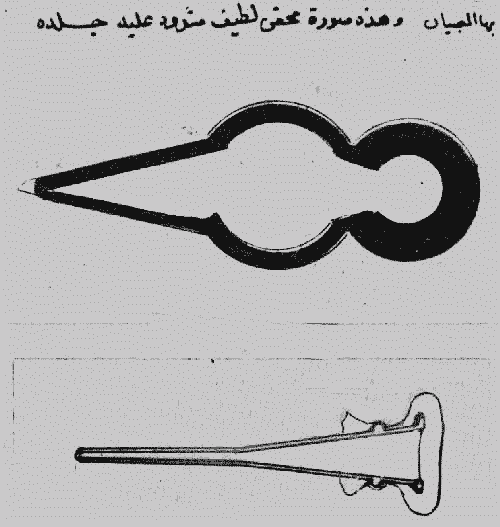
Figure 17.—A crude form of bulb syringe recommended for use with children. Top, from original Arabic manuscript (Ali 2854), courtesy Süleymaniye Umumi Kütüphanesi Müdürlüğü. Bottom, from Leclerc, Abulcasis.
The next chapter, on cupping, mentions the use of cups made of horns, wood, copper, or glass, according to circumstances and the availability of material. The methods of treatment are divided into two kinds: dry cupping, with or without fire, and wet cupping (see fig. 19). He prescribes ointments and aromatic and medicated waters to be applied before and after cupping to facilitate healing. Only when cupping is not possible, as on the nose, fingers, and similar parts of the human body, does he propose the use of leeches for treatment.30 Evidently this is an indication that he did not, as generally supposed, encourage the widespread use of leeches.
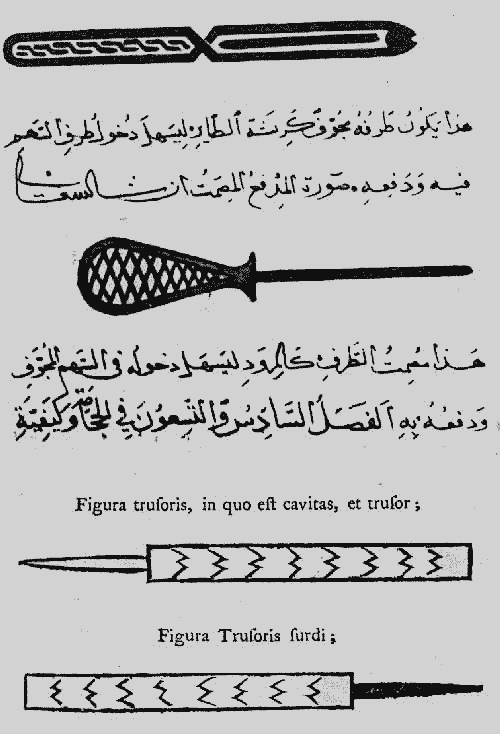
Figure 18.—Hooks and forceps used for the
extraction of arrows. Top, from original
Arabic manuscript (Tüb. MS. 91), courtesy
Universitätsbibliothek Tübingen. Bottom,
from Channing, Albucasis.
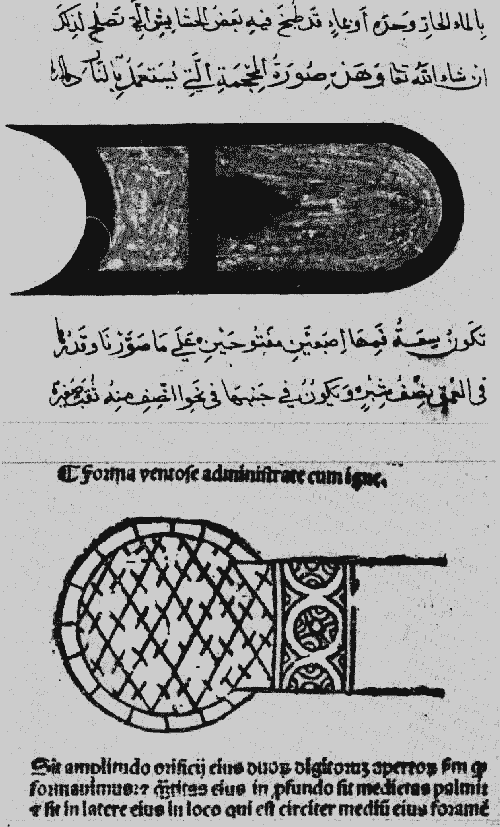
Figure 19.—Cupping. Top, from original Arabic manuscript (Tüb. MS. 91), courtesy Universitätsbibliothek Tübingen. Bottom, from Argellata 1531, courtesy National Library of Medicine.
The third and final section, of 35 chapters, deals with the reduction, luxation, and treatment of injured bones, including fracture of the pelvis. The advices and warnings in the prelude of this section appear to repeat some of al-Zahrāwī’s sayings that had been covered in his previous introductions. The text, however, presents many facets of interest to the health 93professions. It elaborates upon the application of various forms of bandages and plasters in a variety of operations. Al-Zahrāwī’s detailed description relating to fractures of bones is a fine anatomical document of historical interest. He illustrates and describes special methods for tying injured or broken bones, and he suggests that bandages made of soft linen be less and less tight as distance increases from the injured place (chapter 1). For the protection of areas adjacent to the injured part against contact with edges of splints he advocates padding with soft gauze and carded wool. In some cases, to guard against swelling, he preferred a delay of one or more days in applying bandages over splints. Al-Zahrāwī also devised and depicted many kinds and shapes of splints for use in simple and compound fractures of the head, shoulders, arms, fingers, etc. (see fig. 20). For example, in discussing the reduction of the humerus, he recommends a splint consisting of a smooth, thin stick bent in the shape of a bow with two strings, each attached to one end of the stick (fig. 21). The injured bone is then placed in the middle of the bent splint for reduction while the patient is seated on a chair. Tying is applied only when there is no "hot" swelling (chapter 11). One of the remarkable observations made in this section is the description of the paralysis caused by fracture of the spine.
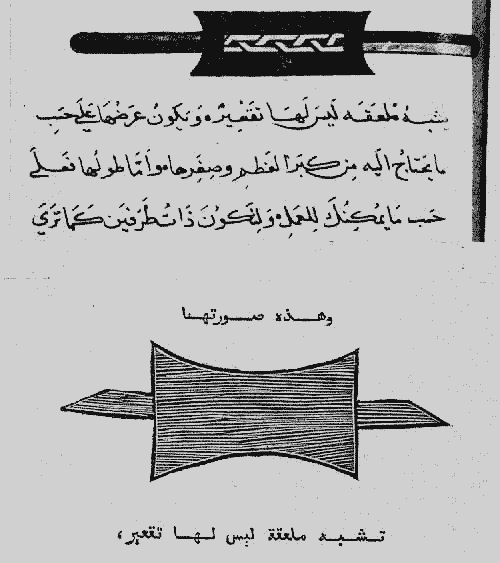
Figure 20.—Splint "in the shape of a spoon without a bowl." Top, from original Arabic manuscript (Tüb. MS. 91), courtesy Universitätsbibliothek Tübingen. Bottom, from Channing, Albucasis.
Of interest to historians of medical therapy and pharmacy are the recipes for poultices that al-Zahrāwī recommends for use over fractured bones. For example, he gives the following recipe for one such poultice: "Take the so-called 'mill’s dust' [ghubār al-rahā], which is the part of the wheat flour that clings to the walls of the mill during grinding [lubāb al-daqīq], and, without sifting away the bran, knead 94with white-of-egg to a medium consistency, and apply." Another, more elaborate, recipe calls for 10 dirhams each of the roots of wild pomegranate [Glossostemon bruguieri D.C.], chickling vetch [the grass pea, Lathymus sativus], and white marshmallow; 5 dirhams each of myrrh and aloes; 6 dirhams of white gum Arabic [Acacia]; and 20 dirhams of bole [friable earthy clay consisting largely of hydrous silicates of aluminum and magnesium, usually colored red because of impurities of iron oxide]. Procedure was to pound all ingredients gently, pass them through a sieve, and knead with water or white-of-egg (chapter 1).
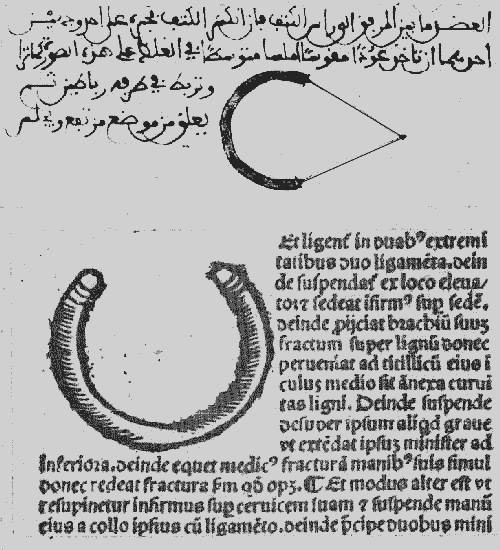
Figure 21.—A splint to support the arm. Top, from original Arabic manuscript (Cod. N.F. 476A), courtesy Oesterreichische Nationalbibliothek. Bottom, from Argellata 1531, courtesy National Library of Medicine.
The question arises as to whether al-Zahrāwī did any human dissection. The answer is uncertain because our knowledge of his life is fragmentary. However, he gives no clue to the dissection of humans in any of the 30 treatises of al-Taṣrīf—his only known writings—and there is no evidence that he practiced it in secret. His upright attitude as a Muslim who repeatedly emphasized his adherence to his faith suggests that he relied completely on animal dissection and the writings of his Greek-Roman and Islamic predecessors. Physicians in both the Islamic domain and in Christendom for many centuries were hostile to the idea of human dissection for any purpose because of their traditional socio-religious convictions, considering it an unethical and undignified practice. Perhaps it has been al-Zahrāwī’s original contributions to surgery, his enthusiasm in emphasizing the value of anatomical knowledge, and his recognition of the necessity that only well-educated, well-trained doctors should perform surgery that have led some medical historians to wonder whether he did human dissection at some time in his long years of experience.
The few examples of illustrations of surgical instruments given here indicate that the Arabic manuscripts, in general, have preserved the original, oriental, artistic features of the drawings in a way that has been overlooked in Latin and vernacular versions of al-Taṣrīf.
In presenting his personal observations and original ideas on surgery late in life, al-Zahrāwī, for the most part, was inspired by a thorough acquaintance with Greek and Arabic medical literature supplemented by lifelong intelligent observation and experience.
Through its descriptions and illustrations, the surgical treatise of al-Zahrāwī very likely played a significant role in the designing of improved surgical instruments in the Middle Ages. Also, the treatise no doubt promoted the development of improved surgical techniques in Islam and, through its translations, promoted these techniques to an even greater extent in the West, a fact that justifies the fame of this treatise as the highest expression of the development of surgery in Arabic Spain—a treatise whose influence continued to the Renaissance. It contributed in no small measure to the idea of equipping learned and well-trained surgeons with the best surgical tools and techniques of the time; moreover, it encouraged the invention of new instruments to meet differing circumstances and special conditions. These tools no doubt greatly facilitated the work of the surgeon.
Throughout the text of al-Taṣrīf al-Zahrāwī gave careful attention to the importance of pharmaceutical preparations in the healing art, including cases requiring surgery.
1 George Sarton, Introduction to the History of Science, Baltimore, 1927, vol. 1, p. 681.
2 Mohammad S. Abu Ganima, in Abul-Kasim ein Forscher der Arabischen Medizin, Berlin, 1929, suggested that description of operations in al-Majūsī’s surgery is clearer than that in al-Zahrāwī’s—a statement which does not seem acceptable.
3 Max Neuburger, Geschichte der Medizin, Stuttgart, 1911, vol. 2, pt. 1, pp. 178-179.
4 Heinrich Haeser, Lehrbuch der Geschichte der Medizin und der epidemischen Krankheiten, Jena, 1875, vol. 1, pp. 578-584; and Donald Campbell, Arabian Medicine and Its Influence on the Middle Ages, London, 1926, vol. 1, p. 88.
5 See the prelude to the treatise.
6 Fielding H. Garrison (An Introduction of the History of Medicine, ed. 4, rev., Philadelphia, 1929, p. 132), states, in reference to "Sudhoff and others," that many drawings earlier than those of al-Zahrāwī have been discovered in medieval manuscripts. However, Garrison overlooked the fact that al-Zahrāwī’s surgical illustrations were mainly depicted for instructional purposes—a unique approach. It should be noted also that al-Zahrāwī died almost a century earlier than Garrison thought. See also Martin S. Spink, "Arabian Gynaecological, Obstetrical and Genito-Urinary Practice Illustrated from Albucasis," Proceedings of the Royal Society of Medicine, 1937, vol. 30, p. 654.
7 Johannis Channing, Albucasis de Chirurgia. Arabice et Latine, Oxford, 1778, 2 vols. (hereinafter referred to as Channing, Albucasis). The text has many errors in spelling and grammar, but Leclerc went too far in criticizing this edition, which has many merits. Moreover, the surgical illustrations (reproduced from the Huntington and Marsh manuscripts of the Bodleian Library) in Channing’s edition are of special interest.
8 Lucien Leclerc, La Chirurgie d’Abulcasis, Paris, 1861 (hereinafter referred to as Leclerc, Abulcasis). This excellent French version was first published in a series of articles in Gazette Médicale de l’Algérie, and seems influenced by Channing’s edition more than Leclerc admits. Leclerc consulted several Arabic copies of the treatise as well as Latin and vernacular translations, but only a few of these Arabic manuscripts are considered complete. The Arabic manuscripts studied for the present article are not the same as those used by Leclerc. See also Leclerc’s monumental work, Histoire de la Médecine Arabe, Paris, 1876, vol. 1, pp. 453-457.
9 Ernst Gurlt, Geschichte der Chirurgie und ihrer Ausübung Volkschirurgie-Alterthum-Mittelalter-Renaissance, Berlin, 1898, vol. 1, pp. 620-649, with more than 100 figures. In the text and illustrations, Gurlt relied upon Leclerc’s translation and modified drawings of the surgical instruments; nevertheless, he presents a brief, systematic study—probably the best so far—of the entire treatise.
10 Karl Sudhoff, Beiträge zur Geschichte der Chirurgie im Mittelalter, Leipzig, 1918 (hereinafter referred to as Sudhoff, Chirurgie), vol. 2, pp. 16-84, with a few plates. Although Sudhoff consulted the fragmentary Arabic manuscript indexed as "Cod. Arab. 1989" in Gotha, Germany, he relied mainly upon Latin versions of the treatise and the illustrations contained in them.
11 See Leclerc, Abulcasis, in introduction.
12 The seven Arabic manuscripts are indexed as "Berlin MS. Or. fol. 91," temporarily at Universitätsbibliothek Tübingen, in Germany; "Escorial MS. Arabe No. 876," at Biblioteca del Monasterio de San Lorenzo el Real de El Escorial, in Spain; "Wien MS. Cod. N.F. 476 A.," at Oesterreichische Nationalbibliothek, in Vienna; and "Ali Emiri Arabi No. 2854," "Beșir Ağa Nos. 502 and 503," and "Veliyyudin No. 2491," all at Süleymaniye Umumi Kütüphanesi Müdürlüğü, in Istanbul. Hereinafter these manuscripts are referred to, respectively, as Tüb. MS. 91; Esc. 876; Wien 476 A; Ali 2854; Bes. 502; Bes. 503; and Vel. 2491. The Smithsonian Institution recently obtained a microfilm copy of Bankipore Manuscript No. 17 from the Khuda Bakhsh O. P. Library, Patna (Bihar), India. This manuscript, containing only the 30th treatise of al-Taṣrīf, was copied in 1189; therefore, it is the earliest dated Arabic manuscript of the surgical treatise known to exist. The surgical illustrations therein add weight to the belief that the Arabic manuscripts show more originality in the drawings than do the later copied versions, which often were inaccurate and possibly distorted. About ten other illustrations from the Arabic manuscript in Istanbul indexed as "Topkapi MS. No. 1990" (which contains 215 beautifully illustrated figures) were presented by A. S. Ünver and Hüseyin Usman in an extract titled "Meșhur Arab Cerrahi Elbülkasimi Zehravi ve onun Kitabül Cerrahiyesi," Istanbul, 1935. See also Ünver, Serefeddin Sabuncuoğlu: Kitabül Cerrahiyei Illhaniye, Istanbul, 1939, pp. [5]-7.
13 See introduction to the treatise; for example, Bes. 502, fol. 522v-523v and Vel. 2491, fol. 104r-105v. See also K. P. J. Sprengel, Versuch einer pragmatischen Geschichte der Arzneikunde, Halle, 1823, vol. 2, pp. 449-451. George J. Fisher, in "Abul-Casem Chalaf Ibn Abbas al-Zahrāwī, Commonly Called Albucasis," Annals of Anatomy and Surgery, July-December, 1883, vol. 8, pp. 24-25, gives a translation of only the first part of the introduction.
14 There are 56 chapters listed in almost all manuscripts and commentary works I checked except Tüb. MS. 91 and Esc. 876, where only 55 chapters are listed.
15 Al-Zahrāwī mentions several caustic medicines used in cautery, among which are garlic, mustard, melted lead, slaked or unslaked lime with or without "common" soap, Thapsia (Ruta graveolens Linn.), and juice of the Oriental cashew nut (Senecarpus anacardium Linn.).
16 Vel. 2491, fol. 106; Bes. 502, fol. 523r-524v.
17 Al-Zahrāwī criticizes those who interpret the saying "cautery is the end of treatment" to mean that cauterization is the best and only conclusive treatment at the physician’s disposal. He points out that other treatments, such as drugs, should be resorted to first, and used until they prove of no avail; and he states that only after cautery proves to be the cure should it be considered the completion of medical treatment—"al-kay ākhir al-Ṭibb." See Vel. 2491, fol. 106; and Bes. 502, fol. 524r-525v.
18 For healing, soothing, or emollient purposes, al-Zahwārī suggested medications, such as egg white, salt water (normal saline), sap of psyllium, several ointments, "duhn" of rose, and other "adhān" (plural of "duhn," the fatty or oily essences extracted from various substances through pharmaceutical processes).
19 For a more accurate estimate of the equivalence of "dirham" according to the area in which the measurement was taken, the reader may consult Walter Hinz, Islamische Masse und Gewichte umgerechnet ins metrische System, Leiden, 1955, pt. 1, pp. 2-8; and George C. Miles, Early Arabic Glass Weights and Stamps, New York, 1948, p. 6.
20 The contents of several manuscripts (such as Ali 2854, Wien 476 A, Bes. 503, and Tüb. MS. 91) give different numbers.
21 See, for example, Tüb. MS. 91, fol. 45v; and Bes. 502, fol. 530v.
22 Sudhoff, op. cit. (footnote 10), p. 29, fig. 6.
23 For a more detailed and interesting discussion with beautiful illustrations included, the reader may consult Ch. Niel, "La Chirurgie Dentaire D’Abulcasis Comparée a celle des Maures du Trarza," Revue de Stematologie, April 1911, vol. 18, pp. [169]-180 and 222-229.
24 It is regrettable that Franz Rosenthal in his fine article "Bibliographical Notes on Medieval Muslim Dentistry" (Bulletin of the History of Medicine, 1960, vol. 34, pp. 52-60) failed to refer to this or any other section of al-Zahrāwī’s work.
25 Bes. 502, fol. 538. See also Channing, Albucasis, pp. 206-208. For the identification of the drugs and their botanical origins the author of the present paper consulted H. P. J. Renaud and Georges S. Colin, Tuḥfat al-Aḥbāb, Glossaire de la Matière Médicale Marocaine, Paris, 1934, pp. 133, 143, 193-194, and Max Meyerhof, Un Glossaire de Matière Médicale Composé par Maimonide, Cairo, 1940, pp. 168-169.
26 Tüb. MS. 91, fol. 99v.
27 Dragon’s blood is a resin obtained from the scales covering the surface of the ripe fruits of "Daemonorops draco Blume" (Heber W. Youngken, Textbook of Pharmacognosy, ed. 6, Philadelphia, 1948, p. 175). See also Renaud and Colin, op. cit. (footnote 25), pp. 54-55.
28 Heinrich Frölich, "Abul-Kasem als Kriegschirurg," Archiv für klinische Chirurgie, 1884, vol. 30, pp. 365-376. This well-presented study was reviewed by Paul Schede in Centralblatt für Chirurgie, 1884, no. 38, pp. 626-627.
29 Johannis Freind, The History of Physick, London, 1726, vol. 2, p. 129.
30 In several manuscripts, the chapter on the use of leeches is the last one in the second section of the treatise.
U.S. GOVERNMENT PRINTING OFFICE: 1961
For sale by the Superintendent of Documents, U.S. Government Printing Office Washington 25, D. C.—Price 20 cents
End of the Project Gutenberg EBook of Drawings and Pharmacy in Al-Zahrawi's
10th-Century Surgical Treatise, by Sami Hamarneh
*** END OF THIS PROJECT GUTENBERG EBOOK DRAWINGS AND PHARMACY ***
***** This file should be named 26038-h.htm or 26038-h.zip *****
This and all associated files of various formats will be found in:
http://www.gutenberg.org/2/6/0/3/26038/
Produced by Chris Curnow, Turgut Dincer, Joseph Cooper and
the Online Distributed Proofreading Team at
http://www.pgdp.net
Updated editions will replace the previous one--the old editions
will be renamed.
Creating the works from public domain print editions means that no
one owns a United States copyright in these works, so the Foundation
(and you!) can copy and distribute it in the United States without
permission and without paying copyright royalties. Special rules,
set forth in the General Terms of Use part of this license, apply to
copying and distributing Project Gutenberg-tm electronic works to
protect the PROJECT GUTENBERG-tm concept and trademark. Project
Gutenberg is a registered trademark, and may not be used if you
charge for the eBooks, unless you receive specific permission. If you
do not charge anything for copies of this eBook, complying with the
rules is very easy. You may use this eBook for nearly any purpose
such as creation of derivative works, reports, performances and
research. They may be modified and printed and given away--you may do
practically ANYTHING with public domain eBooks. Redistribution is
subject to the trademark license, especially commercial
redistribution.
*** START: FULL LICENSE ***
THE FULL PROJECT GUTENBERG LICENSE
PLEASE READ THIS BEFORE YOU DISTRIBUTE OR USE THIS WORK
To protect the Project Gutenberg-tm mission of promoting the free
distribution of electronic works, by using or distributing this work
(or any other work associated in any way with the phrase "Project
Gutenberg"), you agree to comply with all the terms of the Full Project
Gutenberg-tm License (available with this file or online at
http://gutenberg.org/license).
Section 1. General Terms of Use and Redistributing Project Gutenberg-tm
electronic works
1.A. By reading or using any part of this Project Gutenberg-tm
electronic work, you indicate that you have read, understand, agree to
and accept all the terms of this license and intellectual property
(trademark/copyright) agreement. If you do not agree to abide by all
the terms of this agreement, you must cease using and return or destroy
all copies of Project Gutenberg-tm electronic works in your possession.
If you paid a fee for obtaining a copy of or access to a Project
Gutenberg-tm electronic work and you do not agree to be bound by the
terms of this agreement, you may obtain a refund from the person or
entity to whom you paid the fee as set forth in paragraph 1.E.8.
1.B. "Project Gutenberg" is a registered trademark. It may only be
used on or associated in any way with an electronic work by people who
agree to be bound by the terms of this agreement. There are a few
things that you can do with most Project Gutenberg-tm electronic works
even without complying with the full terms of this agreement. See
paragraph 1.C below. There are a lot of things you can do with Project
Gutenberg-tm electronic works if you follow the terms of this agreement
and help preserve free future access to Project Gutenberg-tm electronic
works. See paragraph 1.E below.
1.C. The Project Gutenberg Literary Archive Foundation ("the Foundation"
or PGLAF), owns a compilation copyright in the collection of Project
Gutenberg-tm electronic works. Nearly all the individual works in the
collection are in the public domain in the United States. If an
individual work is in the public domain in the United States and you are
located in the United States, we do not claim a right to prevent you from
copying, distributing, performing, displaying or creating derivative
works based on the work as long as all references to Project Gutenberg
are removed. Of course, we hope that you will support the Project
Gutenberg-tm mission of promoting free access to electronic works by
freely sharing Project Gutenberg-tm works in compliance with the terms of
this agreement for keeping the Project Gutenberg-tm name associated with
the work. You can easily comply with the terms of this agreement by
keeping this work in the same format with its attached full Project
Gutenberg-tm License when you share it without charge with others.
1.D. The copyright laws of the place where you are located also govern
what you can do with this work. Copyright laws in most countries are in
a constant state of change. If you are outside the United States, check
the laws of your country in addition to the terms of this agreement
before downloading, copying, displaying, performing, distributing or
creating derivative works based on this work or any other Project
Gutenberg-tm work. The Foundation makes no representations concerning
the copyright status of any work in any country outside the United
States.
1.E. Unless you have removed all references to Project Gutenberg:
1.E.1. The following sentence, with active links to, or other immediate
access to, the full Project Gutenberg-tm License must appear prominently
whenever any copy of a Project Gutenberg-tm work (any work on which the
phrase "Project Gutenberg" appears, or with which the phrase "Project
Gutenberg" is associated) is accessed, displayed, performed, viewed,
copied or distributed:
This eBook is for the use of anyone anywhere at no cost and with
almost no restrictions whatsoever. You may copy it, give it away or
re-use it under the terms of the Project Gutenberg License included
with this eBook or online at www.gutenberg.org
1.E.2. If an individual Project Gutenberg-tm electronic work is derived
from the public domain (does not contain a notice indicating that it is
posted with permission of the copyright holder), the work can be copied
and distributed to anyone in the United States without paying any fees
or charges. If you are redistributing or providing access to a work
with the phrase "Project Gutenberg" associated with or appearing on the
work, you must comply either with the requirements of paragraphs 1.E.1
through 1.E.7 or obtain permission for the use of the work and the
Project Gutenberg-tm trademark as set forth in paragraphs 1.E.8 or
1.E.9.
1.E.3. If an individual Project Gutenberg-tm electronic work is posted
with the permission of the copyright holder, your use and distribution
must comply with both paragraphs 1.E.1 through 1.E.7 and any additional
terms imposed by the copyright holder. Additional terms will be linked
to the Project Gutenberg-tm License for all works posted with the
permission of the copyright holder found at the beginning of this work.
1.E.4. Do not unlink or detach or remove the full Project Gutenberg-tm
License terms from this work, or any files containing a part of this
work or any other work associated with Project Gutenberg-tm.
1.E.5. Do not copy, display, perform, distribute or redistribute this
electronic work, or any part of this electronic work, without
prominently displaying the sentence set forth in paragraph 1.E.1 with
active links or immediate access to the full terms of the Project
Gutenberg-tm License.
1.E.6. You may convert to and distribute this work in any binary,
compressed, marked up, nonproprietary or proprietary form, including any
word processing or hypertext form. However, if you provide access to or
distribute copies of a Project Gutenberg-tm work in a format other than
"Plain Vanilla ASCII" or other format used in the official version
posted on the official Project Gutenberg-tm web site (www.gutenberg.org),
you must, at no additional cost, fee or expense to the user, provide a
copy, a means of exporting a copy, or a means of obtaining a copy upon
request, of the work in its original "Plain Vanilla ASCII" or other
form. Any alternate format must include the full Project Gutenberg-tm
License as specified in paragraph 1.E.1.
1.E.7. Do not charge a fee for access to, viewing, displaying,
performing, copying or distributing any Project Gutenberg-tm works
unless you comply with paragraph 1.E.8 or 1.E.9.
1.E.8. You may charge a reasonable fee for copies of or providing
access to or distributing Project Gutenberg-tm electronic works provided
that
- You pay a royalty fee of 20% of the gross profits you derive from
the use of Project Gutenberg-tm works calculated using the method
you already use to calculate your applicable taxes. The fee is
owed to the owner of the Project Gutenberg-tm trademark, but he
has agreed to donate royalties under this paragraph to the
Project Gutenberg Literary Archive Foundation. Royalty payments
must be paid within 60 days following each date on which you
prepare (or are legally required to prepare) your periodic tax
returns. Royalty payments should be clearly marked as such and
sent to the Project Gutenberg Literary Archive Foundation at the
address specified in Section 4, "Information about donations to
the Project Gutenberg Literary Archive Foundation."
- You provide a full refund of any money paid by a user who notifies
you in writing (or by e-mail) within 30 days of receipt that s/he
does not agree to the terms of the full Project Gutenberg-tm
License. You must require such a user to return or
destroy all copies of the works possessed in a physical medium
and discontinue all use of and all access to other copies of
Project Gutenberg-tm works.
- You provide, in accordance with paragraph 1.F.3, a full refund of any
money paid for a work or a replacement copy, if a defect in the
electronic work is discovered and reported to you within 90 days
of receipt of the work.
- You comply with all other terms of this agreement for free
distribution of Project Gutenberg-tm works.
1.E.9. If you wish to charge a fee or distribute a Project Gutenberg-tm
electronic work or group of works on different terms than are set
forth in this agreement, you must obtain permission in writing from
both the Project Gutenberg Literary Archive Foundation and Michael
Hart, the owner of the Project Gutenberg-tm trademark. Contact the
Foundation as set forth in Section 3 below.
1.F.
1.F.1. Project Gutenberg volunteers and employees expend considerable
effort to identify, do copyright research on, transcribe and proofread
public domain works in creating the Project Gutenberg-tm
collection. Despite these efforts, Project Gutenberg-tm electronic
works, and the medium on which they may be stored, may contain
"Defects," such as, but not limited to, incomplete, inaccurate or
corrupt data, transcription errors, a copyright or other intellectual
property infringement, a defective or damaged disk or other medium, a
computer virus, or computer codes that damage or cannot be read by
your equipment.
1.F.2. LIMITED WARRANTY, DISCLAIMER OF DAMAGES - Except for the "Right
of Replacement or Refund" described in paragraph 1.F.3, the Project
Gutenberg Literary Archive Foundation, the owner of the Project
Gutenberg-tm trademark, and any other party distributing a Project
Gutenberg-tm electronic work under this agreement, disclaim all
liability to you for damages, costs and expenses, including legal
fees. YOU AGREE THAT YOU HAVE NO REMEDIES FOR NEGLIGENCE, STRICT
LIABILITY, BREACH OF WARRANTY OR BREACH OF CONTRACT EXCEPT THOSE
PROVIDED IN PARAGRAPH F3. YOU AGREE THAT THE FOUNDATION, THE
TRADEMARK OWNER, AND ANY DISTRIBUTOR UNDER THIS AGREEMENT WILL NOT BE
LIABLE TO YOU FOR ACTUAL, DIRECT, INDIRECT, CONSEQUENTIAL, PUNITIVE OR
INCIDENTAL DAMAGES EVEN IF YOU GIVE NOTICE OF THE POSSIBILITY OF SUCH
DAMAGE.
1.F.3. LIMITED RIGHT OF REPLACEMENT OR REFUND - If you discover a
defect in this electronic work within 90 days of receiving it, you can
receive a refund of the money (if any) you paid for it by sending a
written explanation to the person you received the work from. If you
received the work on a physical medium, you must return the medium with
your written explanation. The person or entity that provided you with
the defective work may elect to provide a replacement copy in lieu of a
refund. If you received the work electronically, the person or entity
providing it to you may choose to give you a second opportunity to
receive the work electronically in lieu of a refund. If the second copy
is also defective, you may demand a refund in writing without further
opportunities to fix the problem.
1.F.4. Except for the limited right of replacement or refund set forth
in paragraph 1.F.3, this work is provided to you 'AS-IS' WITH NO OTHER
WARRANTIES OF ANY KIND, EXPRESS OR IMPLIED, INCLUDING BUT NOT LIMITED TO
WARRANTIES OF MERCHANTIBILITY OR FITNESS FOR ANY PURPOSE.
1.F.5. Some states do not allow disclaimers of certain implied
warranties or the exclusion or limitation of certain types of damages.
If any disclaimer or limitation set forth in this agreement violates the
law of the state applicable to this agreement, the agreement shall be
interpreted to make the maximum disclaimer or limitation permitted by
the applicable state law. The invalidity or unenforceability of any
provision of this agreement shall not void the remaining provisions.
1.F.6. INDEMNITY - You agree to indemnify and hold the Foundation, the
trademark owner, any agent or employee of the Foundation, anyone
providing copies of Project Gutenberg-tm electronic works in accordance
with this agreement, and any volunteers associated with the production,
promotion and distribution of Project Gutenberg-tm electronic works,
harmless from all liability, costs and expenses, including legal fees,
that arise directly or indirectly from any of the following which you do
or cause to occur: (a) distribution of this or any Project Gutenberg-tm
work, (b) alteration, modification, or additions or deletions to any
Project Gutenberg-tm work, and (c) any Defect you cause.
Section 2. Information about the Mission of Project Gutenberg-tm
Project Gutenberg-tm is synonymous with the free distribution of
electronic works in formats readable by the widest variety of computers
including obsolete, old, middle-aged and new computers. It exists
because of the efforts of hundreds of volunteers and donations from
people in all walks of life.
Volunteers and financial support to provide volunteers with the
assistance they need, is critical to reaching Project Gutenberg-tm's
goals and ensuring that the Project Gutenberg-tm collection will
remain freely available for generations to come. In 2001, the Project
Gutenberg Literary Archive Foundation was created to provide a secure
and permanent future for Project Gutenberg-tm and future generations.
To learn more about the Project Gutenberg Literary Archive Foundation
and how your efforts and donations can help, see Sections 3 and 4
and the Foundation web page at http://www.pglaf.org.
Section 3. Information about the Project Gutenberg Literary Archive
Foundation
The Project Gutenberg Literary Archive Foundation is a non profit
501(c)(3) educational corporation organized under the laws of the
state of Mississippi and granted tax exempt status by the Internal
Revenue Service. The Foundation's EIN or federal tax identification
number is 64-6221541. Its 501(c)(3) letter is posted at
http://pglaf.org/fundraising. Contributions to the Project Gutenberg
Literary Archive Foundation are tax deductible to the full extent
permitted by U.S. federal laws and your state's laws.
The Foundation's principal office is located at 4557 Melan Dr. S.
Fairbanks, AK, 99712., but its volunteers and employees are scattered
throughout numerous locations. Its business office is located at
809 North 1500 West, Salt Lake City, UT 84116, (801) 596-1887, email
business@pglaf.org. Email contact links and up to date contact
information can be found at the Foundation's web site and official
page at http://pglaf.org
For additional contact information:
Dr. Gregory B. Newby
Chief Executive and Director
gbnewby@pglaf.org
Section 4. Information about Donations to the Project Gutenberg
Literary Archive Foundation
Project Gutenberg-tm depends upon and cannot survive without wide
spread public support and donations to carry out its mission of
increasing the number of public domain and licensed works that can be
freely distributed in machine readable form accessible by the widest
array of equipment including outdated equipment. Many small donations
($1 to $5,000) are particularly important to maintaining tax exempt
status with the IRS.
The Foundation is committed to complying with the laws regulating
charities and charitable donations in all 50 states of the United
States. Compliance requirements are not uniform and it takes a
considerable effort, much paperwork and many fees to meet and keep up
with these requirements. We do not solicit donations in locations
where we have not received written confirmation of compliance. To
SEND DONATIONS or determine the status of compliance for any
particular state visit http://pglaf.org
While we cannot and do not solicit contributions from states where we
have not met the solicitation requirements, we know of no prohibition
against accepting unsolicited donations from donors in such states who
approach us with offers to donate.
International donations are gratefully accepted, but we cannot make
any statements concerning tax treatment of donations received from
outside the United States. U.S. laws alone swamp our small staff.
Please check the Project Gutenberg Web pages for current donation
methods and addresses. Donations are accepted in a number of other
ways including checks, online payments and credit card donations.
To donate, please visit: http://pglaf.org/donate
Section 5. General Information About Project Gutenberg-tm electronic
works.
Professor Michael S. Hart is the originator of the Project Gutenberg-tm
concept of a library of electronic works that could be freely shared
with anyone. For thirty years, he produced and distributed Project
Gutenberg-tm eBooks with only a loose network of volunteer support.
Project Gutenberg-tm eBooks are often created from several printed
editions, all of which are confirmed as Public Domain in the U.S.
unless a copyright notice is included. Thus, we do not necessarily
keep eBooks in compliance with any particular paper edition.
Most people start at our Web site which has the main PG search facility:
http://www.gutenberg.org
This Web site includes information about Project Gutenberg-tm,
including how to make donations to the Project Gutenberg Literary
Archive Foundation, how to help produce our new eBooks, and how to
subscribe to our email newsletter to hear about new eBooks.